Greetings.
Long time since I posted a request.
I am firmly of the opinion that small vessels serve a broader purpose in mission and campaign design than the big ladies. This is no knock on the beautiful warship mods that have come out in the last few years , and I have happily scooped up nearly every one very gratefully. Nonetheless here is a little lass that I have never heard mentioned , yet 115 were commissioned , and they served through WW2.
APC-1 Class Coastal Patrol Vessel
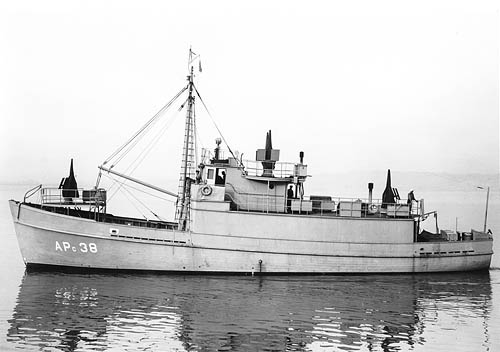
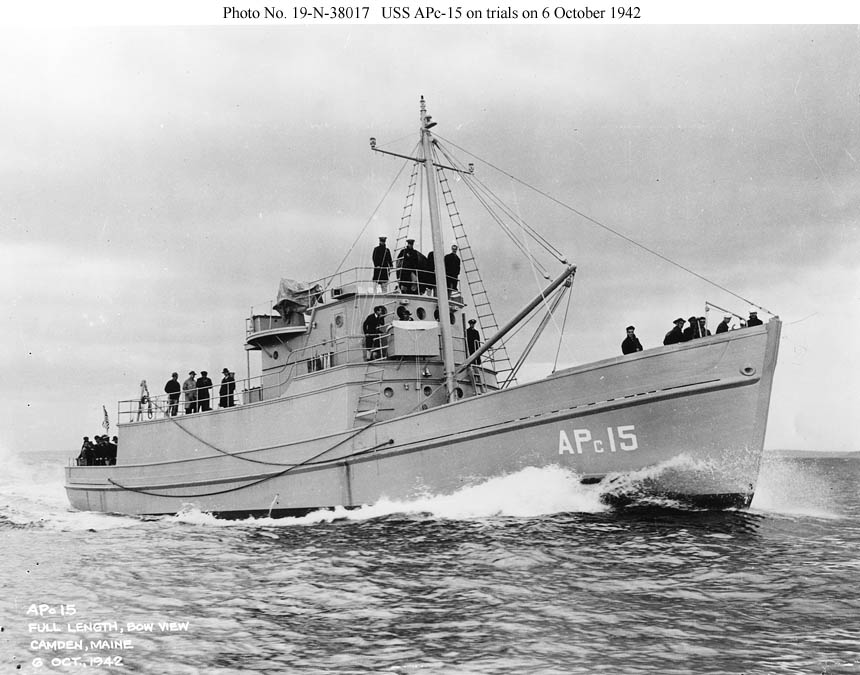
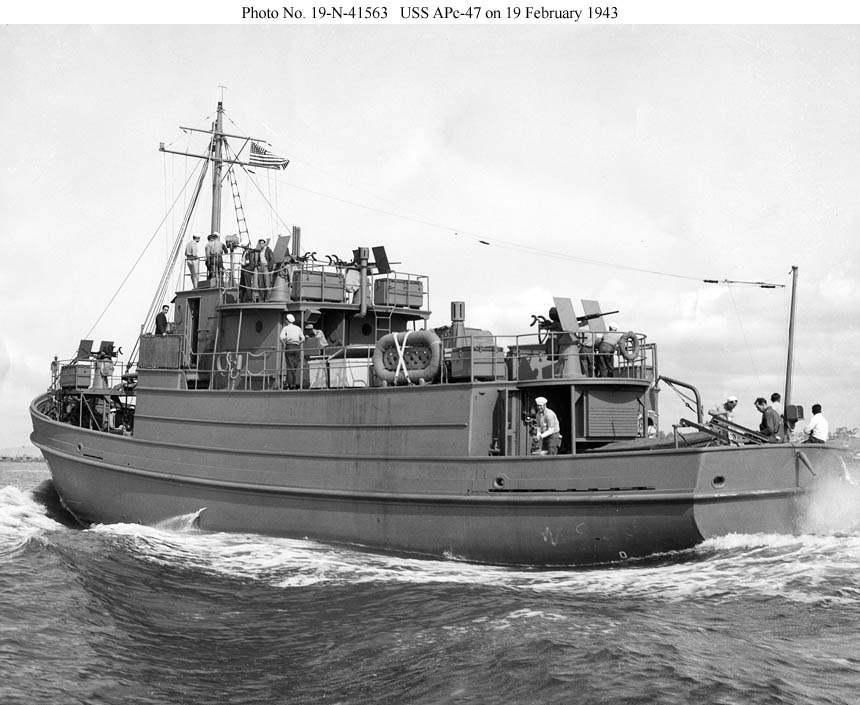
Class Notes:
FY 1942. Some units had a 500 HP diesel. The procurement history of the APc-1 class begins with the AMc (coastal minesweeper) and ends with the LCIL (Large Infantry Landing Craft). Interwar mobilization plans called for two types of minesweepers, a large seagoing type (AM) and a smaller coastal type (AMc). Wartime needs for the former were to be satisfied by a combination of new construction and requisitioning of large commercial fishing vessels, while needs for the latter were expected to be fulfilled entirely by taking craft from the fishing fleet. By late 1940 it was clear that some new construction AMc's would also be needed, and twenty were ordered from shipbuilders in December 1940 and January 1941, followed by another 50 in April 1941. They were built to a design based on the commercial fishing boats then being requisitioned and had wood hulls, a length of 96 feet, and a speed of about 12 knots. On 19 Jan 42 CNO directed the construction of another batch of 50 of this type, AMc 150-199. However in December 1940 the Navy had also started building a new type of minesweeper for local defense, the Motor Mine Sweeper (YMS). This type turned out to be able to do anything the AMc could do but had greater length (136 feet) and, perhaps most important, the ability to sweep magnetic mines. By the end of January 1942 the construction of 489 of this well regarded type including 80 for the British, had been undertaken or directed.
In February 1942 the Bureau of Ships issued specifications for a modified design for AMc 150-199. It was to be slightly longer than its predecessor (103 feet overall) and was to incorporate a number of other detailed improvements. This process was interrupted on 13 Apr 42 when the CNO requested the construction of the 50 vessels as "raider transports, AP," probably for use in the South Pacific. The District Craft Development Board, in recommending the change on 20 Apr 42, suggested three possible uses for the craft, for which the category "Coastal transport (small), APc" was created on 22 April: (1) transportation of 2 officers and 74 men (possibly a raiding party) for a maximum voyage of 24 hours, (2) transportation of 2 officers, 50 men, and a cargo of 1,500 cu.ft. for 24 hours, and (3) carrying a cargo of 4,000 cu.ft. (17 tons) and no passengers on a voyage of 2,500 miles. To carry cargo, the vessels were to be equipped with a 2-ton capacity boom on the foremast serving an 8x7 foot hatch to the forward compartment, and to travel up to 2,500 miles their fuel and water capacity was to be increased. AMc 150-199 thus became APc 1-50, though not respectively. The British found the new type attractive and on 6 Jun 42 requisitioned 50 more, and on 25 Jul 42 the Assistant CNO for Maintenance (Adm. Farber) recommended adding 15 or more small APc's to the program in view of the long time it took to get construction of the ones already ordered underway. On 5 Aug 42 VCNO directed the addition of the 15 APc's, for a total of 115.
In the meantime, construction of 350 landing craft of a new type, the LCIL, had been directed on 20 May 42, and on 1 Oct 42 CominCh wrote that LCILs were more suitable than APc's as troop carriers. He may have had in mind the raiding mission mentioned above, although the troop capacity, size, and speed of the new type were all far greater than those of the APc's. On 3 Oct 42 VCNO cancelled the 15 APc's in his August directive. This action terminated the APc program and also resulted in the scrambling of both the hull numbers and the directives associated with the various hulls. During the process of contracting for the additional 15 ships, the units numbered APc 75-89 were renumbered APc 100-15. The 15 cancellations were spread out throughout the contracts placed in late August and early September, and the official accounting ascribed the 15 cancelled hulls to the 5 Aug 42 directive and ascribed to the British requisition all of the units between APc-51 and APc-115 that were actually built.
Of this large class, only ten units, APc 85-94, were assigned to the Atlantic Fleet. One was transferred to Ecuador, and the others were soon relegated to use as personnel ferries for local naval facilites and eventually disarmed, placed out of commission and put in service with reduced crews as district craft. In July 1945 their passenger capacity was set at 250 persons (with the addition of ballast and removal of armament), and in this role they were found to be much more suitable than LCIL's or LCM's. In September 1945 CinCLant wanted to use two at Bermuda, one at Newport, and six at Casco Bay, Maine. These were the only vessels of this class to see postwar service.

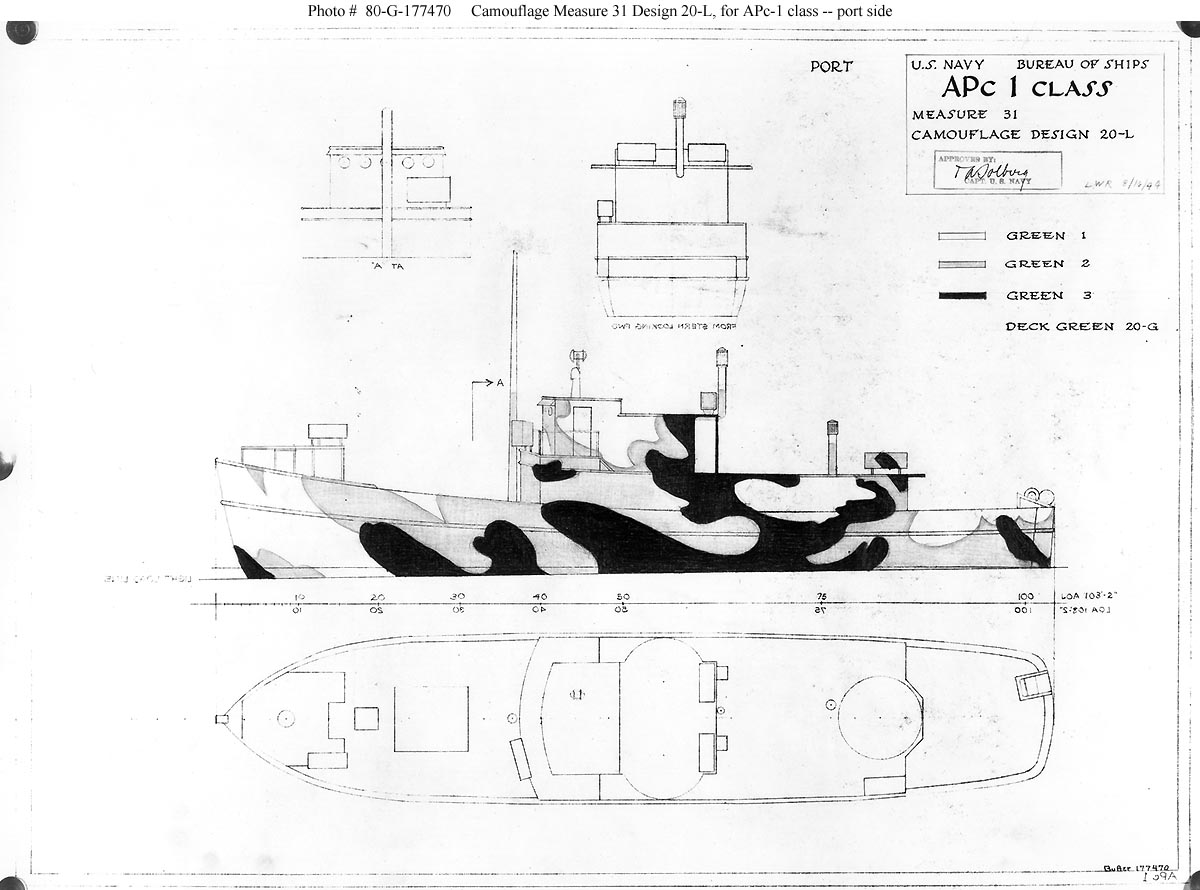
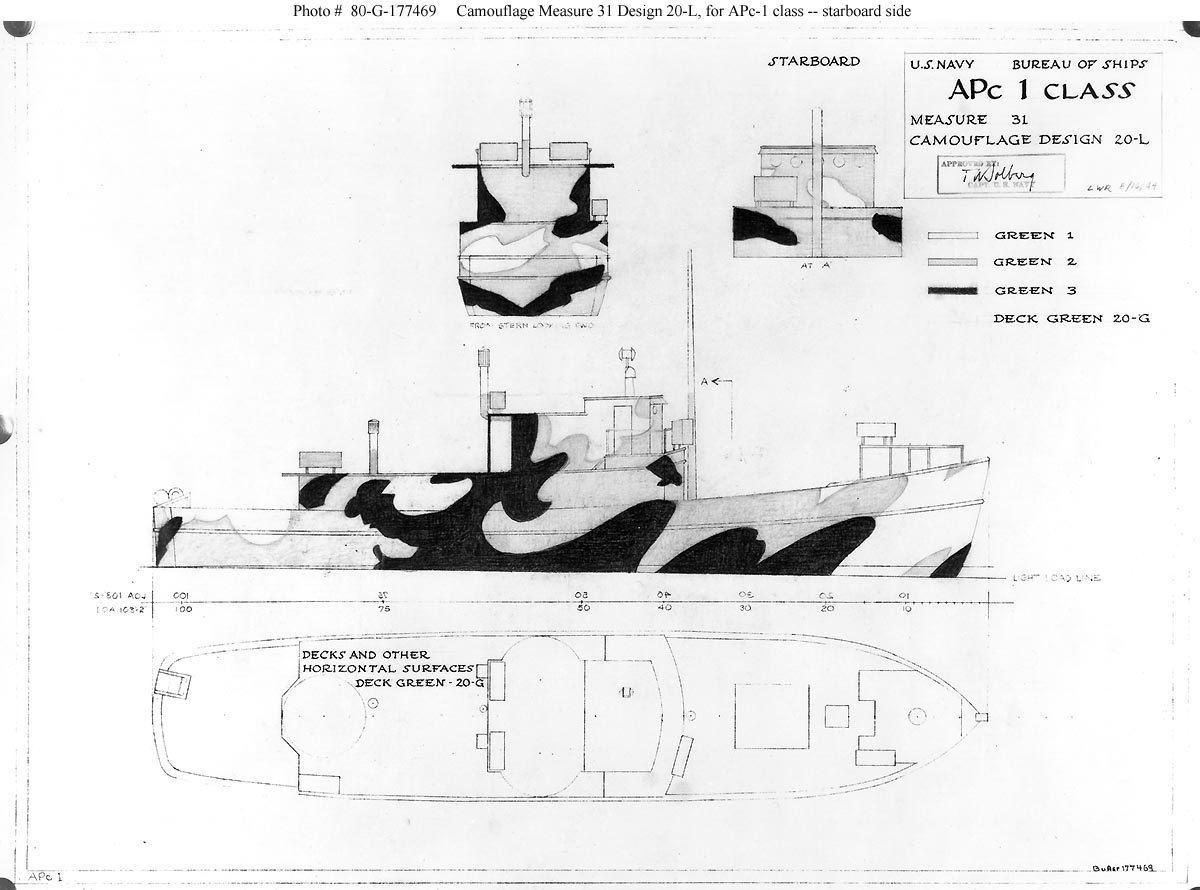
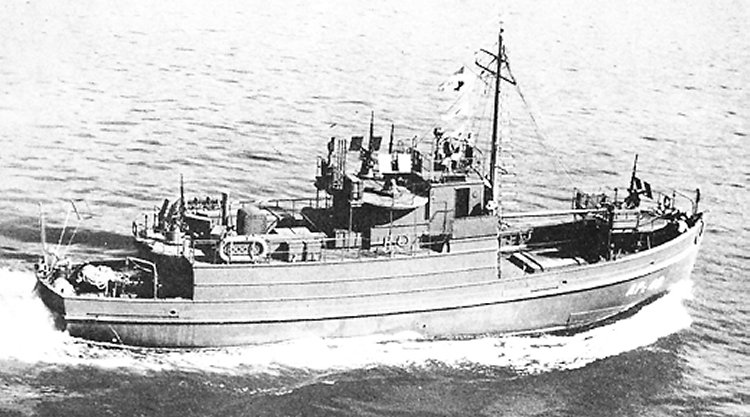

Class: APC-1 (APC-1)
Design: Navy APC-1
Displacement (tons): 161 light, 258 lim.
Dimensions (feet): 103.25' oa, 98.2' wl x 21.25' e x 9.25' lim.
Original Armament: 4-20mm single
Later armaments: 2-20mm single (1943: APc 87-90, 93-98, 110-111)
Complement: 21 (1944)
Speed (kts.): 10
Propulsion (HP): 400
Machinery: Diesel, 1 screw
That's all I've got for now. No cross-sections immediately available. She just caught my eye.
Kopfdorfer